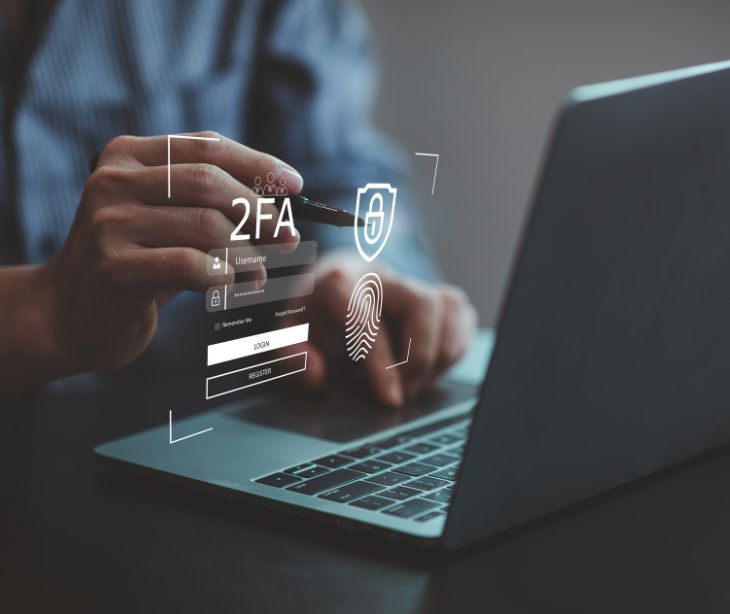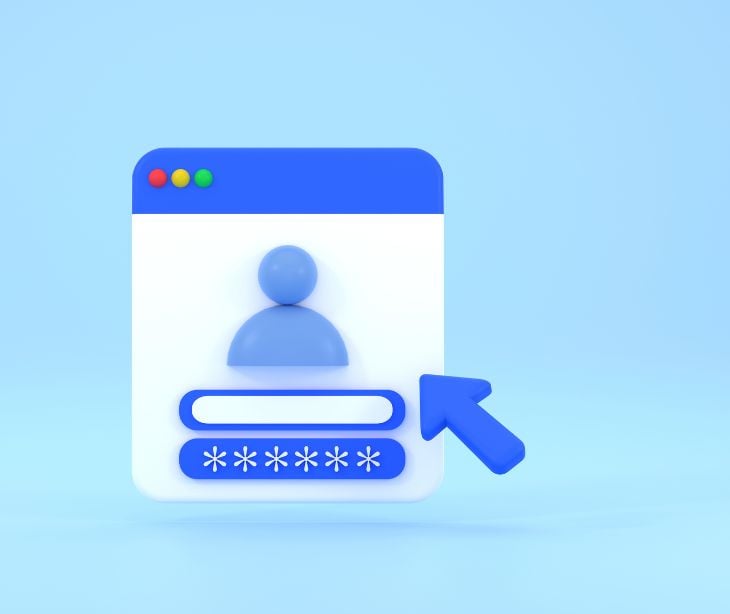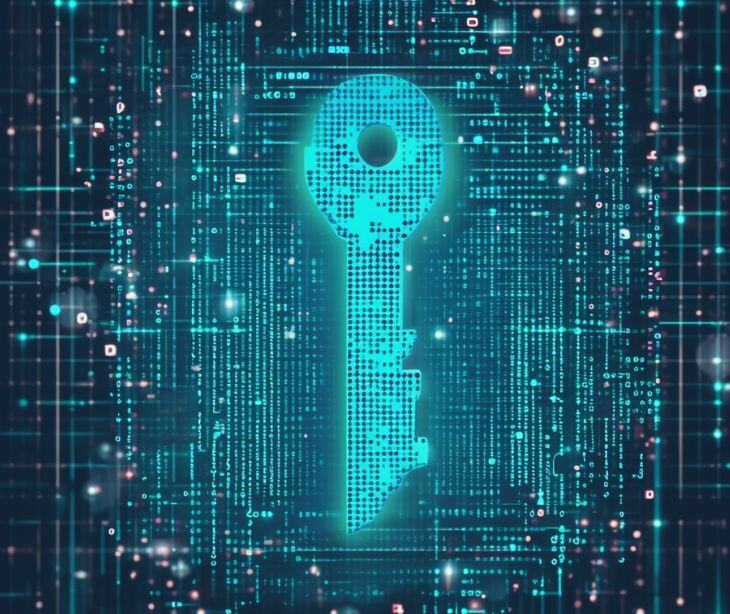4 min read
How to train healthcare employees on two-factor authentication (2FA)
Kapua Iao
May 15, 2024

Two-factor authentication (2FA), also known as multifactor authentication (MFA), adds an extra layer of security to an account with a login, such as an email. With 2FA, a user would need to provide two different authentication factors to gain access. Healthcare organizations should consider implementing 2FA as part of their HIPAA compliant email strategy.
Training healthcare staff on HIPAA security strategies, like 2FA, improves adherence to the act’s privacy and security requirements. Healthcare organizations can follow the steps in this guide to effectively train healthcare staff on the use of strong access controls.
HIPAA and 2FA
HIPAA’s Security Rule requires covered entities to implement measures and ensure the confidentiality, integrity, and availability of PHI. The rule mandates the use of an “authentication” to verify that a person or entity seeking access is who they say they are and should have access. 2FA security adds an essential layer of confirmation protection.
2FA asks an individual to prove who they are even after providing a password to log in. Such MFA contributes to maintaining the security and compliance of patient data by:
- Enhancing data security
- Authorizing user authentication
- Creating a role-based access control
- Generating an audit trail with logins
- Safeguarding against the loss or theft of devices
- Further securing remote access connections
- Demonstrating agreement with HIPAA’s guidelines
The Verizon 2024 Data Breach Investigations Report indicates that the three most popular methods used to gain malicious access are email phishing, web application vulnerabilities, and web application credential stealing. Adding an extra step to protect PHI could make a difference in protecting sensitive information from cyberattackers.
What happens if healthcare staff is not properly trained?
An unsecured email puts patients and their information at risk. For an organization, a breached email could lead to costly penalties, shutdown services, and damage to a healthcare provider’s reputation. Of the 909 breaches under investigation on the U.S. Department of Health and Human Services (HHS) Breach Portal, 178 (19.6%) list the location of the breach as email.
Failure to train staff on HIPAA compliant email poses tangible risks to healthcare organizations, their employees, and their patients:
- The possibility of PHI being sent to the wrong person and/or part of an unsecured breach
- Misunderstandings about patient access and sharing permissions among staff
- Extra time spent fixing organizational inefficiencies and reporting breached emails
- An increase in staff stress and a decrease in job satisfaction
See also: The role of employee education in email security for healthcare organizations
Steps to train staff on 2FA
Providing training and support to healthcare staff enhances security proficiency and HIPAA familiarity. Equipping employees with the skills for securely logging into an account minimizes breaches, misunderstandings, and potential errors. By following the steps below, healthcare organizations can demonstrate that they did all they possibly could to diminish the opportunity for human error.
Identify staff to train
Start by identifying staff who require HIPAA training on using account access, including email. Examples of employees to consider include doctors, nurses, administrative staff, IT personnel, receptionists, and records management staff. The material should be customized to specific roles and responsibilities while an organization should consider that all employees need account security training.
Set up the training program
Decide if the training will be done within or by a third party known for conducting HIPAA training. Then, determine the content to cover, such as password creation and protection, MFA policies and procedures, and employee account responsibilities. Define the objectives and desired outcomes of the training program.
Look at how to present the material, such as practical examples and case studies, to illustrate how HIPAA compliance applies to staff. Include such training methods as presentations, handouts, interactive modules, videos, and/or workshops. Try to incorporate interactive elements like quizzes, discussions, or real-life scenarios to enhance engagement and knowledge retention.
Conduct the training
Establish a training schedule that accommodates staff availability and allows everyone to participate. Keep staff engaged and adapt as needed. Staff should leave the training sessions understanding the:
- Importance of access controls and MFA
- Proper way to enable and use 2FA
- In-house policy on access, use, and disclosure
- Protocols for proper access
- Identification and handling of PHI
- Management of patient authorizations and requests as concerned with access
Go beyond HIPAA email requirements and include general information about HIPAA. Make sure that employees leave training with knowledge about HIPAA and its importance to proper patient care.
Assess and evaluate the training
After training, conduct regular assessments to gauge staff comprehension and identify areas for improvement. Seek feedback from staff on the training content, delivery, and relevance to their roles. Monitor staff adherence to email policies through regular audits, spot checks, or incident reporting to ensure the program’s effectiveness.
Maintain HIPAA compliance through continuous training
HIPAA training should be performed as often as possible based on the assessment. Consider how long the training might be good for and when a refresher might be needed. It may also be helpful to encourage staff to stay updated on HIPAA independently through self-education, newsletters, or online resources.
Fostering a culture of accountability and adherence to HIPAA policies teaches staff the importance of maintaining PHI security through strong access controls like 2FA.
FAQs
Is MFA mandatory for HIPAA compliance?
While HIPAA does not explicitly mandate the use of MFA, it is considered a best practice for enhancing security and is often recommended by security experts and regulatory bodies. Healthcare organizations are required to implement appropriate safeguards to protect PHI, and MFA is recognized as an effective measure for achieving this goal.
What types of authentication factors are commonly used in MFA for healthcare organizations?
Common authentication factors used in MFA for healthcare organizations include, but are not limited to:
- passwords,
- security tokens,
- biometric data (such as fingerprints or facial recognition),
- one-time passcodes sent via SMS or email, and
- smart cards.
Does implementing MFA require significant investment in infrastructure and resources?
The cost of implementing MFA can vary depending on factors such as the size of the organization, the complexity of the MFA solution, and the level of customization required. While there may be upfront costs associated with purchasing and deploying MFA solutions, the long-term benefits in terms of improved security and regulatory compliance often outweigh the initial investment.
Many MFA solutions offer flexible pricing models and scalable options to accommodate the needs and budgets of healthcare organizations of all sizes.
Subscribe to Paubox Weekly
Every Friday we'll bring you the most important news from Paubox. Our aim is to make you smarter, faster.




